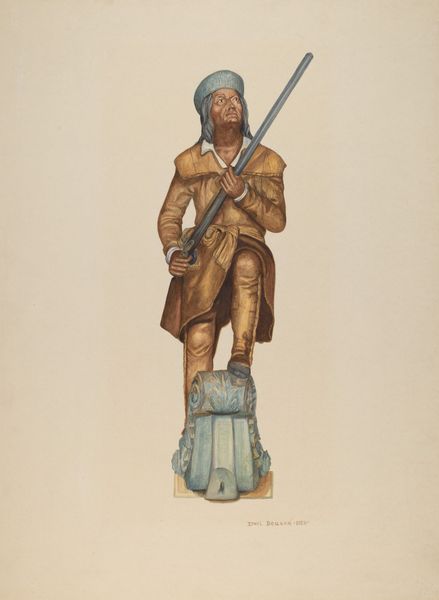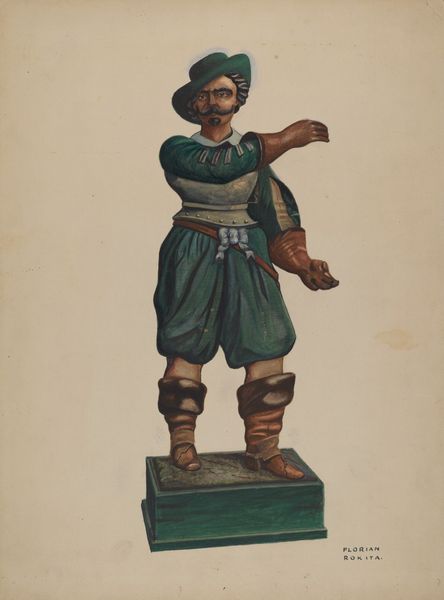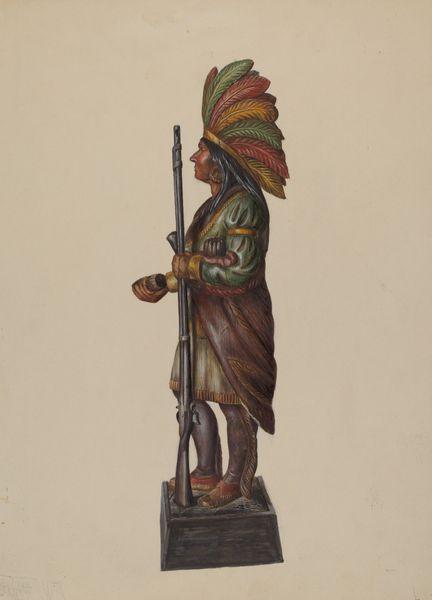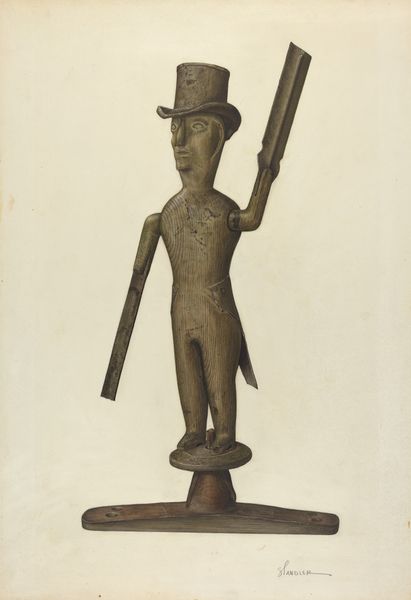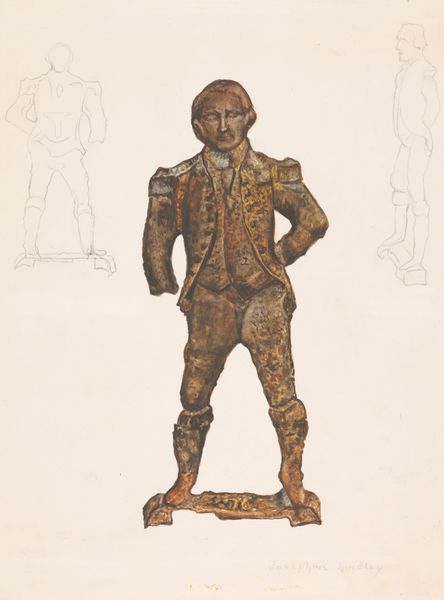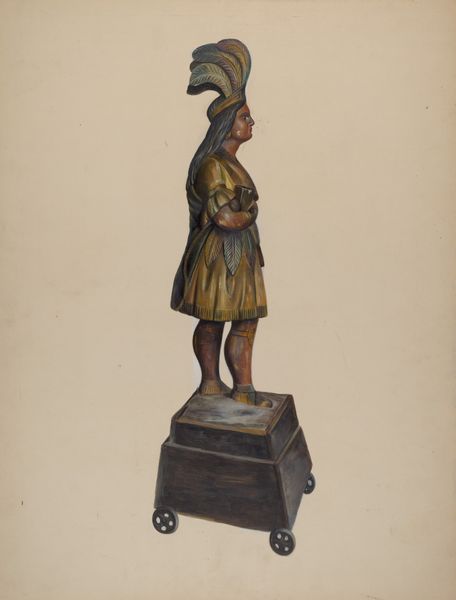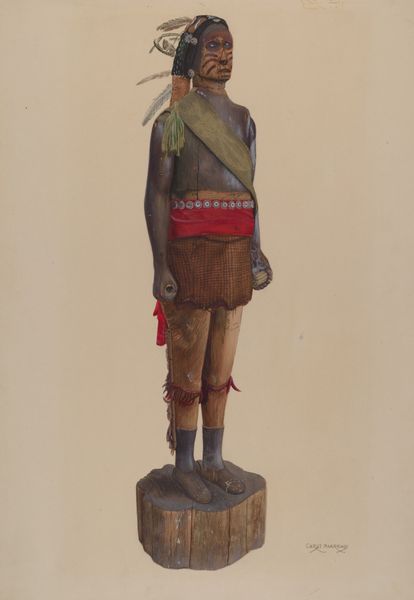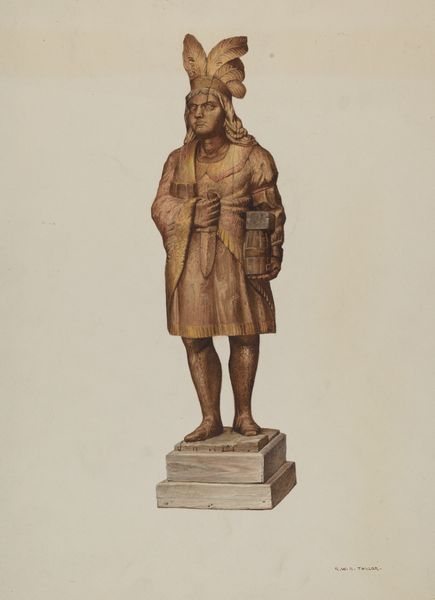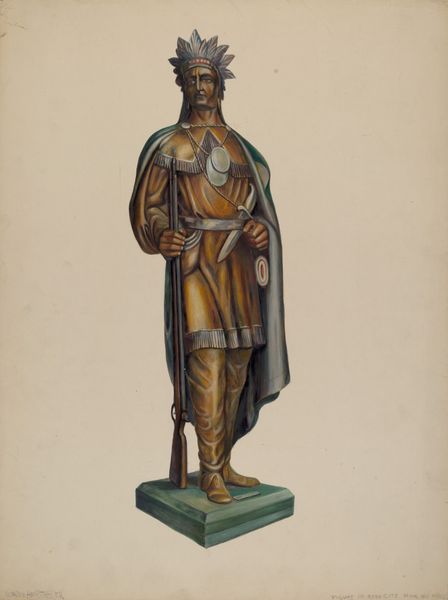
drawing, watercolor
#
portrait
#
drawing
#
figuration
#
watercolor
#
portrait drawing
#
portrait art
#
watercolor
#
realism
Dimensions: overall: 35.6 x 24.7 cm (14 x 9 3/4 in.)
Copyright: National Gallery of Art: CC0 1.0
Curator: Looking at this artwork, my first impression is how dignified the figure appears. There's an undeniable gravitas to it. Editor: I agree. The piece we’re observing is titled “Carved Soldier” created around 1939, attributed to Samuel W. Ford. It appears to be a watercolor and drawing, offering a fascinating lens through which to examine military iconography and its connection to race. The figure presents as a wooden sculpture standing firm. I find it interesting. Curator: I’m drawn to the artist’s choices in rendering the figure’s garments—that ocher shade speaks of specific historical uniforms, maybe referencing conflicts and imperial ambitions we often overlook in mainstream narratives. I imagine what identity the artist wishes to bestow on this symbolic image. Editor: Note also how the rifle and sword are rendered with clear lines and details. Such inclusions suggest a focus on martial authority, perhaps pointing back to old visual traditions centered on power and militarism. The artist makes him stand on a simple base or landscape. Do you think there’s a narrative there about place and belonging? Curator: That's quite astute! The land evokes ideas around contested space. This work could prompt us to consider questions of representation – who gets memorialized as a soldier, and what histories are foregrounded or left untold. How might a contemporary audience grapple with images of uniformed figures, particularly when their symbolic charge is deeply complex and not easy to decode? Editor: Exactly! He invites us to reflect on how this singular image participates in and perhaps even challenges historical constructions, inviting the viewer to examine these complex associations and the layers of meaning they carry. The watercolor washes are evocative, I perceive them almost as representing faded glory, or the mutability of history itself. Curator: Indeed. The dialogue sparked here is really where the richness lies, compelling us to examine historical perspectives through an intersectional lens, accounting for those often marginalized or erased by dominant narratives. Editor: Absolutely, prompting us to examine visual rhetoric to reconsider what those traditional displays communicate across time and contexts. A truly insightful study of iconography!
Comments
No comments
Be the first to comment and join the conversation on the ultimate creative platform.

